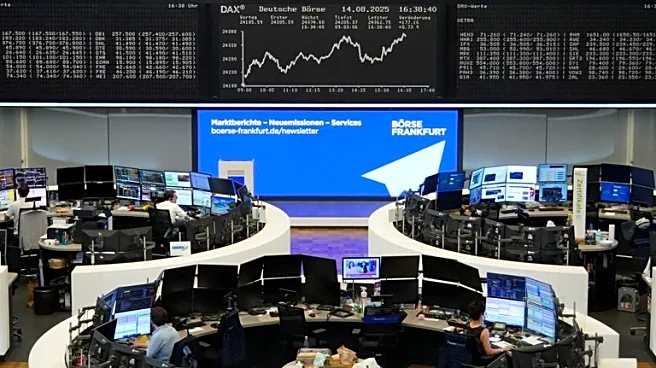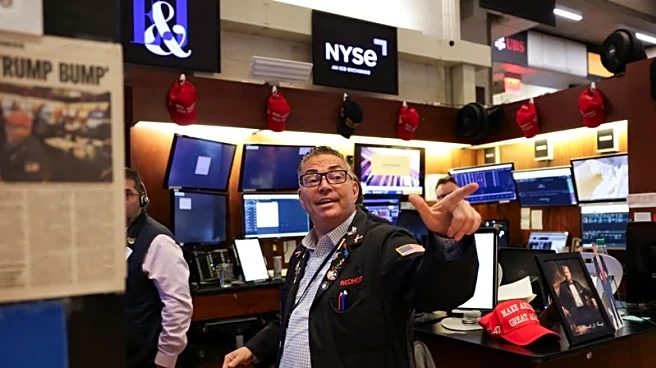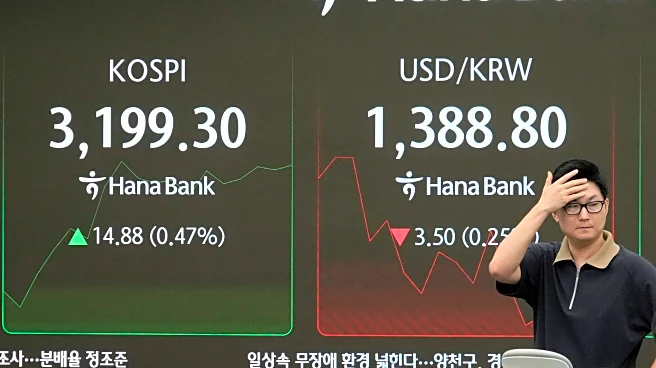What's Happening?
Gold prices have reached near-record levels, approaching $3,600 per ounce, driven by weak U.S. jobs data and heightened expectations for Federal Reserve rate cuts. As of Friday, spot gold was trading at $3,596.55 per ounce, marking its strongest weekly gain in nearly four months. U.S. gold futures for December delivery also saw an increase, settling at $3,653.30. This surge in gold prices is attributed to several factors, including U.S. dollar weakness, central bank buying, and a softening monetary policy backdrop amid geopolitical and economic uncertainty. The recent U.S. jobs report indicated a sharp decline in job growth for August, with the unemployment rate rising to 4.3%, further fueling speculation of rate cuts by the Federal Reserve.
Why It's Important?
The rise in gold prices is significant as it reflects investor sentiment towards safe-haven assets amid economic uncertainty. Gold, which does not pay interest, tends to perform well when interest rates are low and market volatility is high. The current economic conditions, including weak job growth and potential rate cuts, are creating a favorable environment for gold investments. This trend could impact various stakeholders, including investors seeking stability, central banks managing reserves, and countries like China and India, which are major consumers of gold. The potential rate cuts by the Federal Reserve could further influence the trajectory of gold prices, affecting global financial markets and economic policies.
What's Next?
The market is closely watching the Federal Reserve's next moves, with traders betting on a high probability of rate cuts in September. The upcoming release of China's central bank gold reserves data may provide additional insights into how high bullion prices are affecting demand from central banks. Analysts are also monitoring the independence of the Federal Reserve, especially after President Trump's attempts to influence its decisions. These developments could shape the future of gold prices and investor strategies, with potential implications for global economic stability and monetary policy.
Beyond the Headlines
The surge in gold prices highlights broader economic concerns, including the weakening U.S. labor market and geopolitical tensions. The independence of the Federal Reserve remains a critical factor, as political pressures could impact its decision-making process. Additionally, the high gold prices are affecting physical demand in major consumer markets like China and India, potentially altering global trade dynamics. The situation underscores the complex interplay between economic indicators, central bank policies, and investor behavior in shaping financial markets.













